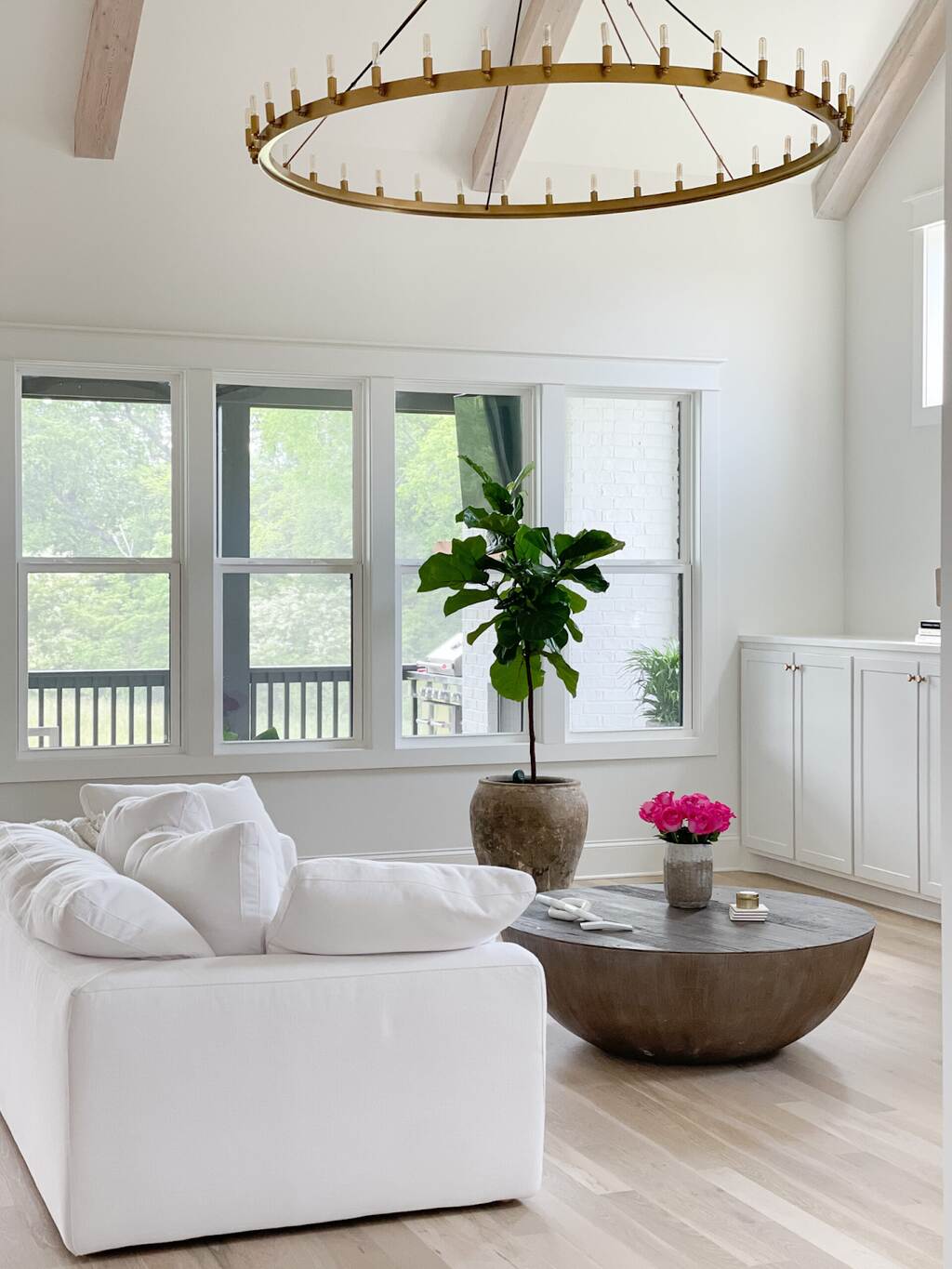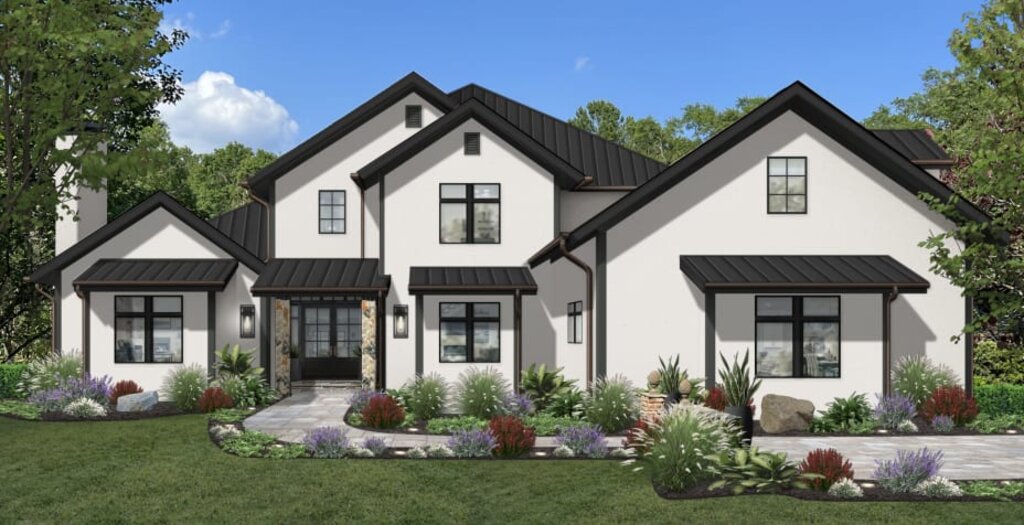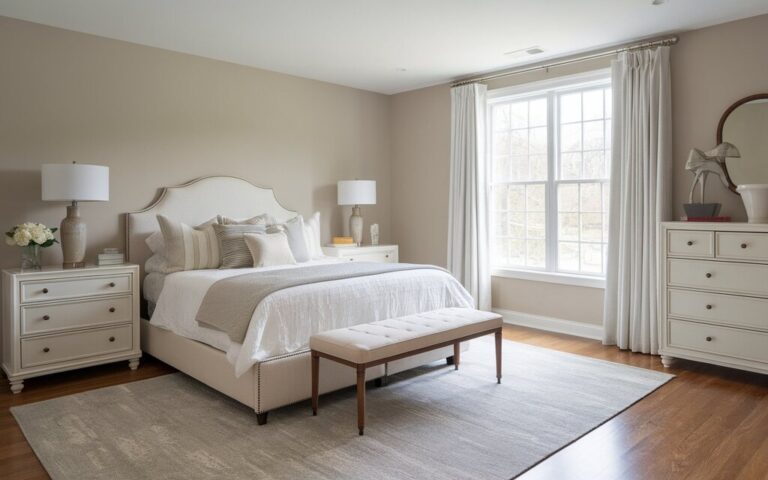In this blog, I’ll explore Snowbound SW 7004 by Sherwin-Williams—one of the most popular yet debated white paints.
Is it too cool? Too warm? Will it work for walls, cabinets, or trim? Choosing the right white can be tricky, but I’ll break down Snowbound’s undertones, lighting effects, and best uses to help you decide if it’s the perfect fit for your home.
Let’s dive in!
Understanding Snowbound’s Characteristics

Light Reflectance Value (LRV)
Snowbound boasts an LRV of 83, placing it in the category of soft whites that reflect a substantial amount of light.
While not the brightest white available, its high LRV ensures that spaces feel airy and open without the starkness that some brighter whites can impart.
Undertones and Temperature
One of Snowbound’s defining features is its subtle gray undertones, which lend it a slightly cool hue.
These undertones provide a crisp, contemporary feel, making it versatile across various design styles.
However, it’s essential to note that lighting conditions can influence how these undertones present themselves.
Snowbound may appear softer and more inviting in warmer lighting, while in cooler or northern light exposures, it can read as a cooler white.
Ideal Applications for Snowbound
Living Spaces
Snowbound serves as an excellent backdrop in living rooms, offering a neutral canvas that allows furnishings and décor to stand out.
Its ability to reflect light can enhance the brightness of the space, creating an inviting atmosphere.
Kitchens
In the kitchen, Snowbound’s versatility shines.
Whether used on walls or cabinetry, its neutral tone pairs well with various countertop materials and backsplash designs.
For a cohesive look, consider using Snowbound on both walls and cabinets, differentiating the sheen to add subtle contrast.
Bedrooms
For bedrooms, Snowbound offers a serene and calming environment, especially in spaces that receive ample natural light from southern or western exposures.
Its neutral tone promotes relaxation, making it a suitable choice for restful spaces.
Exteriors

Snowbound isn’t limited to interior applications. On exteriors, it provides a clean, modern aesthetic.
When paired with darker accents, such as navy or charcoal, Snowbound can create a striking and contemporary facade.
Coordinating Colors
Selecting complementary colors is crucial to achieving a harmonious design. Here are some Sherwin-Williams shades that pair well with Snowbound:
- Repose Gray (SW 7015): A warm greige that works well for trim and doors, offering a subtle contrast without overpowering the primary color.
- Gibraltar (SW 6257): A subdued blue-gray suitable for secondary bedrooms or offices. For exteriors, it can serve as the main color with Snowbound as the trim.
- Dovetail (SW 7018): A neutral warm gray ideal for secondary rooms, providing depth and sophistication.
- Naval (SW 6244): A deep, cool blue that makes for a stunning accent, particularly on kitchen islands or feature walls.
Comparing Snowbound to Other Popular Whites
To fully appreciate Snowbound’s unique qualities, it’s helpful to compare it to other popular white paint colors:
Pure White (SW 7005)
- LRV: 84, slightly higher than Snowbound.
- Undertones: Soft yellow, giving it a warmer appearance.
- Comparison: Pure White’s warmth makes it versatile across various lighting conditions, while Snowbound’s cooler undertones offer a more neutral feel.
Alabaster (SW 7008)
- LRV: 82, close to Snowbound.
- Undertones: Subtle warm tones with a hint of yellow, resulting in a creamy appearance.
- Comparison: Alabaster’s warmth creates a cozy atmosphere, whereas Snowbound’s gray undertones provide a more neutral and cool aesthetic.
Greek Villa (SW 7551)
- LRV: 84, similar to Pure White.
- Undertones: Yellow, contributing to a warm and soft feel.
- Comparison: Greek Villa’s warmth suits Mediterranean-style interiors, while Snowbound’s cooler undertones align with contemporary designs.
Extra White (SW 7006)
- LRV: 86, making it one of Sherwin-Williams’ brightest whites.
- Undertones: Cool blue, resulting in a crisp and stark appearance.
- Comparison: Extra White offers a modern, crisp look, whereas Snowbound provides a softer, more neutral white suitable for various settings.
Conclusion
Sherwin-Williams’ Snowbound is a versatile white paint that balances coolness with subtle warmth, making it suitable for a variety of applications. Its gray undertones and high LRV ensure spaces feel bright yet inviting. However, as with any paint color, it’s essential to test Snowbound in your specific environment. Lighting, existing furnishings, and personal preferences all play a role in how a color reads in a space. By considering these factors and using the insights provided, you can determine if Snowbound is the perfect white to enhance your home’s aesthetic.
FAQ
Does Snowbound look too gray in certain lighting?
Snowbound has subtle gray undertones, but it generally reads as a soft, neutral white. In north-facing rooms with cooler light, it may appear slightly grayer, while in warm lighting, it leans toward a soft, crisp white.
Is Snowbound a good choice for trim and doors?
Yes! Snowbound is a popular trim color, especially when paired with warmer or greige wall colors. If you want a softer contrast, use it with deeper grays or blues.
How does Snowbound compare to Alabaster?
Snowbound is a cooler white with slight gray undertones, while Alabaster is warmer and creamier. If you prefer a crisp, modern feel, Snowbound is a better choice, whereas Alabaster is cozier.
Will Snowbound work well with wood tones?
Absolutely! Snowbound’s neutral base pairs beautifully with both light oak and darker walnut woods, balancing out warm and cool tones for a timeless look.
Can Snowbound be used on exterior surfaces?
Yes! Snowbound works well for exteriors, especially when paired with darker trim colors like navy, charcoal, or deep green. However, in bright sunlight, it may appear slightly whiter than it does indoors.

